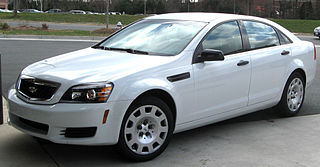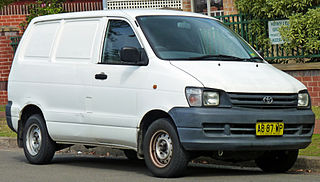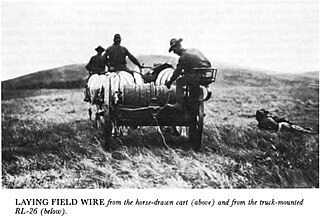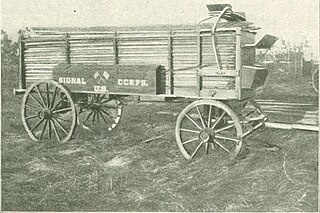Related Research Articles

The Chevrolet Chevelle is a mid-sized automobile that was produced by Chevrolet in three generations for the 1964 through 1978 model years. Part of the General Motors (GM) A-body platform, the Chevelle was one of Chevrolet's most successful nameplates. Body styles included coupes, sedans, convertibles, and station wagons. The "Super Sport" versions were produced through the 1973 model year and Lagunas from 1973 through 1976.

The Honda Accord, also known as the Honda Inspire in Japan and China for certain generations, is a series of cars manufactured by Honda since 1976, best known for its four-door sedan variant, which has been one of the best-selling cars in the United States since 1989. The Accord nameplate has been applied to a variety of vehicles worldwide, including coupes, station wagons, hatchbacks and a Honda Crosstour crossover.

The Chevrolet Caprice is a full-sized automobile produced by Chevrolet in North America for the 1965 to 1996 model years. Full-size Chevrolet sales peaked in 1965 with over a million sold. It was the most popular car in the U.S. in the 1960s and early 1970s, which, during its lifetime, included the Biscayne, Bel Air, and Impala.

The Oldsmobile Cutlass was a series of automobiles produced by General Motors' Oldsmobile division between 1961 and 1999. At its introduction, the Cutlass was Oldsmobile's entry-level model; it began as a unibody compact car, but saw its greatest success as a body-on-frame intermediate. The Cutlass was named after the type of sword, which was common during the Age of Sail.

The Buick Electra is a full-size luxury car manufactured and marketed by Buick from 1959 to 1990, over six generations. Introduced as the replacement for the Roadmaster lines, the Electra served as the flagship Buick sedan line through its entire production and was offered as a six-passenger four-door sedan with two-door sedan, two-door convertible, and five-door station wagon variants.

The Mitsubishi Diamante is an automobile that was manufactured by Mitsubishi Motors from 1990 to 2005.

The Dodge Power Wagon is a four-wheel drive medium duty truck that was produced in various model series from 1945 to 1980 by Dodge. The Power Wagon name was revived for the 2005 model year as a four-wheel drive version of the Dodge Ram 2500. As a nameplate, "Power Wagon" continues as a special package of the four-wheel drive version of 3/4 ton Ram Trucks 2500 model.

The Chrysler Town & Country is an automobile which was manufactured by Chrysler from 1940 to 1942 and from 1945 to 1988 with production interrupted during World War II. Primarily produced as a luxury station wagon, the Town & Country was also available in "woodie" four-door sedan, two-door hardtop and convertible body styles from 1947 to 1950, 1968 to 1969 and from 1983 to 1986. The 1988 model year was the last for the station wagon until the 1990 model year when Chrysler reintroduced the Town & Country nameplate as the rebadged variant Chrysler Town & Country minivan.

A horse-drawn vehicle is a mechanized piece of equipment pulled by one horse or by a team of horses. These vehicles typically had two or four wheels and were used to carry passengers and/or a load. They were once common worldwide, but they have mostly been replaced by automobiles and other forms of self-propelled transport.

The Eaton Hall Railway was an early 15 in gauge minimum gauge estate railway built in 1896 at Eaton Hall in Cheshire. The line, which connected the Grosvenor estate with sidings at Balderton on the GWR Shrewsbury to Chester Line about 3 miles (4.8 km) away, opened in 1896. It was built for the Duke of Westminster by Sir Arthur Percival Heywood, who had pioneered the use of 15 in gauge with his Duffield Bank Railway at his house at Duffield, Derbyshire in 1874.

The Toyota LiteAce and TownAce are a line of light commercial and derivative passenger vans produced by the Japanese car manufacturer Toyota. These vehicles originally utilized the cab-over-engine configuration, although since 1996 a semi-cab-over arrangement has featured instead. The LiteAce launched in 1970 as light-duty truck, with commercial and van/wagon body variants added in 1971. In 1976, Toyota released the larger TownAce van/wagon that derived from the LiteAce; a TownAce truck arrived later in 1978. Between 1982 and 1992, the series accommodated the MasterAce Surf—an upscale TownAce passenger wagon.

Trench railways represented military adaptation of early 20th-century railway technology to the problem of keeping soldiers supplied during the static trench warfare phase of World War I. The large concentrations of soldiers and artillery at the front lines required delivery of enormous quantities of food, ammunition and fortification construction materials where transport facilities had been destroyed. Reconstruction of conventional roads and railways was too slow, and fixed facilities were attractive targets for enemy artillery. Trench railways linked the front with standard gauge railway facilities beyond the range of enemy artillery. Empty cars often carried litters returning wounded from the front.

The fourth-generation Honda Civic is an automobile produced by Honda from 1987 until 1991 with the wagon continuing in production in some markets until 1996. The suspension had a new double-wishbone suspension in the front and an independent suspension in the rear, the wheelbase was increased to 98.4 inches (250 cm), and the body was redesigned with a lower hood line and more glass, giving less drag. The redesigned Civic was introduced in 1987 for the 1988 model year. The fourth-generation Civic would be available in three variants; 3-door hatchback, 4-door sedan and 5-door wagon with various trim levels offered in each variant.

Ben Hur trailer was the nickname of the World War II U.S. Army Trailer, 1-ton payload, 2-wheel, cargo, and the Trailer, 1-ton payload, 2-wheel, water tank, 250 gallon. Specialized variants were also manufactured.

The K-1 cart is a wire cart type K-1. It comprises a 2-wheel reel cart used for the rapid laying and recovering of telephone and telegraph lines in the field. It is completely equipped with a reel, mechanically rotated and controlled, 1 chest with wire-laying equipment, a driver's seat, and appropriate parts and fittings specially designed and used for only on this cart; designed to carry 5 miles of wire, type W-39. It was formerly known as "Wire reel cart, type N".

The K-2 Lance wagon is a light wagon approximately 14 ft long, equipped with a high box body running its entire length, the body surmounted in front by a driver's seat; tool and supply containers are attached to either side of the box; proper re-enforcements are provided and suitable brakes are attached; rear wheel diameter 4 ft 8 in; gauge 4 ft 10 in; height of box body 3 ft 9 in; width of box body 3 ft 4 in.

The K-3 cart is a 2-wheel, strongly constructed wire cart, similar to artillery caissons, but equipped for carrying and reeling out wire; used together with Signal cart, type K-4, to form the wagon formerly called "Pintle wire wagon, model 1910."

The K-4 cart is a 2-wheel strongly constructed signal cart similar to artillery caissons, but equipped for carrying signal equipment; used with the Wire cart, type K-3, to form the wagon formerly called "Pintle wire wagon, M1910".

The K-5 truck is a light automobile truck with a 10 feet 4 inches (3.15 m) wheelbase, standard automobile gauge, and 35 in (89 cm) wheels; length from front of radiator to rear of body 15 feet (4.57 m); equipped with single top; formerly marked with the Signal Corps emblem and the words "Signal Corps, U.S. Army" and also with the name "Maintenance truck No.5" or "Tender for radio tractor No.3".
References
- ↑ Signal Corps (1920). Signal Corps Storage Catalogue. Washington: Government Printing Office. pp. 571–2.
- ↑ https://archive.org/details/electricalinstr00corpgoog Electrical instruments and telephones of the US Signal Corps (1911)